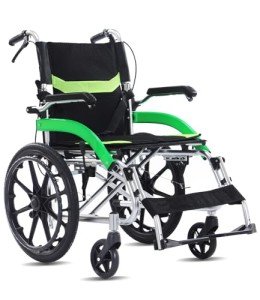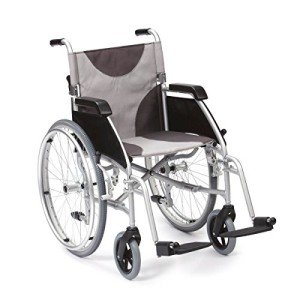5 Tools Everyone Within The How To Self Propel A Wheelchair Industry S…

2025-04-07 21:36
7
0
본문
 How to Self Propeller a Wheelchair
How to Self Propeller a WheelchairLearning to self-propulse in a wheelchair can open up a whole new world of independence. It takes a lot of the right body posture and practice to accomplish this.
 A precise grip and method of pushing is essential for a the correct body positioning. This article will focus on these skills as well as other aspects that are crucial to wheelchair propulsion.
A precise grip and method of pushing is essential for a the correct body positioning. This article will focus on these skills as well as other aspects that are crucial to wheelchair propulsion.Hand Positioning
Properly pushing a wheelchair hands is an essential component of self-propulsion. It's best self propelled wheelchair to start with precision and then move to speed. It's also a good idea to sit down while pushing to improve the stability and comfort, especially for those who have lower back or upper body limitations. Hands should be set so that they match the speed of the wheel. You should also push with both hands, without wrapping thumbs around hand-rims. This is a common omission that reduces efficiency and can increase the force required per stroke.
The recovery path of the hands should be done in a comfortable pendular pattern below the hand-rims at the end of each propelling cycle to avoid contact with the rear wheels (a "semi-circular" recovery pattern). This helps reduce shoulder strain as well as limiting the number of strokes and the length of each stroke at the minimum.
It is sometimes recommended to make long strokes and a full recovery when working on more difficult surfaces (like the hand position on the timepiece). This can help reduce shoulder injuries due to repetitive motion, however it could also increase the strain on the shoulders.
It is also possible to minimize shoulder injuries by utilizing the same posture when stopping and propelling. If the user of a wheelchair is able to maintain a consistent pace for both actions, they'll be more able to control the forces and adjust to the changes in terrain.
On soft or muddy surfaces it is usually necessary to lean slightly forward while driving to stop the front wheels from sinking into the ground and tipping backwards. It is worth trying different levels of trunk lean to determine the right balance between too little and too much lean. As with any new skill, consistent practice will lead to increased competence and confidence. Wheelchair propulsion is a crucial skill for those who suffer from mobility issues and can open up a whole world of independence. Anyone can learn how to operate an automatic wheelchair with ease with the proper technique, equipment and knowledge. This entry was posted under News and classified as wheelchair.
Foot Positioning
It is important to ensure that the client's feet are positioned correctly for stability. It is not advisable to place the feet of a wheelchair too far apart as it makes it difficult for the wheelchair to self-propel. Sometimes, it is essential for the wheelchair to be able to maneuver over difficult terrain. For instance, if the client is going to go down a very steep ramp, or even over one of our amazing National Parks or beaches then the wheelchair must have wheels that can be pushed up and over them in a manner that allows the user to move themselves forwards. The front wheels should be placed in the way shown below.
When the client has this setup they can simply grasp the wheels' rims and push them together to move forwards. This requires an enormous amount of upper body strength and is quite slow but it is doable and it can allow clients who would otherwise not be able to go up or down hills to do so.
Wheelies are also necessary so that the client can get over obstacles like curbs or even people. In this position, the user will place their left foot on top of the right, to allow them to lift themselves up and over the obstruction. The person will then move their right leg upwards and over the obstacle, while pushing with their left hand. This is known as a"crown walk" and it is an efficient method to maneuver a wheelchair through some of our more challenging terrain.
Self-propelled wheelchairs, or manual chairs as they are sometimes called they are a fantastic solution for many disabled and injured people who wish to be able to move around without relying on someone else for help. They are lightweight self propelled wheelchair, versatile and foldable to not take up as much space in a home like other mobility aids do. They can transform into powerchairs using accessories like the E-Motion, giving the user the freedom of being able to use their chair while enjoying the benefit of electric assistance when required.
Braking
The ability to ultra lightweight self propelled wheelchair-propel a wheelchair is a valuable ability for those with mobility issues. They can maneuver through a variety of types of terrains and conditions on their own. It also helps to build strength in their shoulders and upper arms.
The user should push down on one side of the hand rim, then pull up the other side to push the wheelchair forward. The push-pull motion creates momentum, which propels the wheelchair in the desired direction. The speed at which the wheelchair is moved can be adjusted by applying more or less pressure to the rims, or by using hand brakes if they are fitted with them.
The ideal push cycle should last at least three hours. This will reduce the time the shoulder is being strained and reduce the chance of injury due to repetitive strain. The size and width of the back wheels will also influence the speed at which a wheelchair gets moved. Larger wheels require more force to move, while smaller wheels are easier to maneuver. Wheelchairs may also be designed with camber, which aligns the rear wheels with biomechanics and enhances the stability of the lateral side.
Wheelchair users who want to improve their propelling techniques should practice in a secure space, like a parking lot or a hall that is empty. The goal should be to create long slow strokes that allow the wheelchair to glide between strokes.
It is also essential for the user to practice moving while moving, like weaving around objects or taking turns. This can be achieved by weaving through cones and then transitioning to straight-line movements. The more you practice, the easier this will be.
self-propelled Wheelchairs (fakenews.win) are a great tool that can allow people to stay active and enjoy the things they used to enjoy. They can provide independence and be a great option to socialize with friends, go to the movies, or even travel. You can regain your independence by learning how to use a chair correctly.
Stability
A wheelchair user who self propels their chair can be independent and go where they want to go without having to rely on others. It does require a good level of upper body strength to push the wheels along flat surfaces and up small hills. This is why the majority of wheelchair users choose to use an attendant controlled (also called an attendant propelled) chair like the Action3 NG or ErgoLite 2 and are driven by an attendant.
It is important to learn how to grip the rims of the hands of manual wheelchairs in a way that will ensure maximum functionality and comfort. We've observed that many people use this kind of wheelchair with their hand rims placed too far in the forward direction. This means that they have to reach further backwards to move their arms. This isn't biomechanically efficient and could cause shoulder strain over time.
The best self propelled wheelchair uk hand-propulsion pattern is a semicircular one in which the user alternates between the push phase of the wheelchair and the recovery phase. The push phase requires the person to push down on the casters which is done with a lot of small strokes. This push pattern helps to maintain a healthy range and exercise the shoulder retractor muscle.
The user should move their hands across the rims until they make contact with the casters once more. This allows for longer strokes, and reduces friction during the recovery phase. Some wheelchair users move their hands over the rims of the wheels in a smooth arc, however this isn't as efficient. It could also cause an increase in wear on the wheels.
Another important aspect of stability is the location of the rear wheel for self-propulsion. If the wheel is too far in the rear, the user could fall off their wheelchair easily. This could make it difficult for them to maneuver around obstacles and it's not a good idea for shoulder injuries. To determine which wheel is suitable for a particular client it is necessary to evaluate their strength, range-of-motion as well as muscle tone, orthopedic status, and other factors during the seat assessment.

댓글목록0